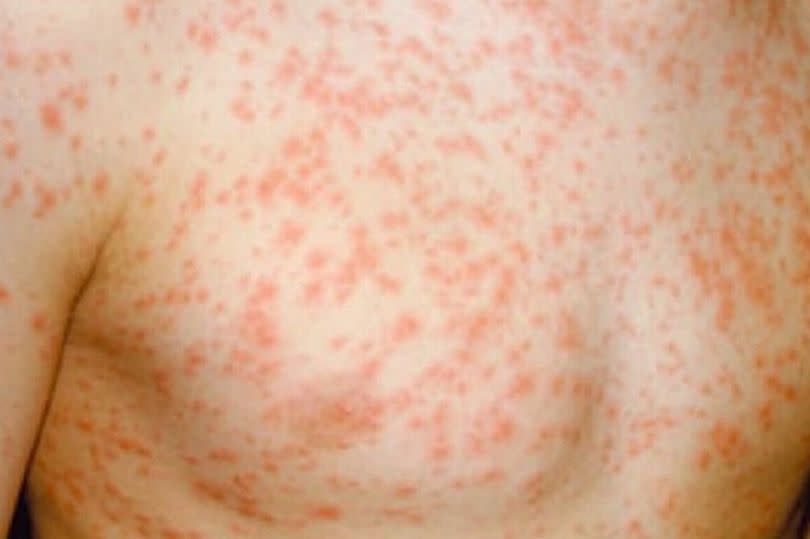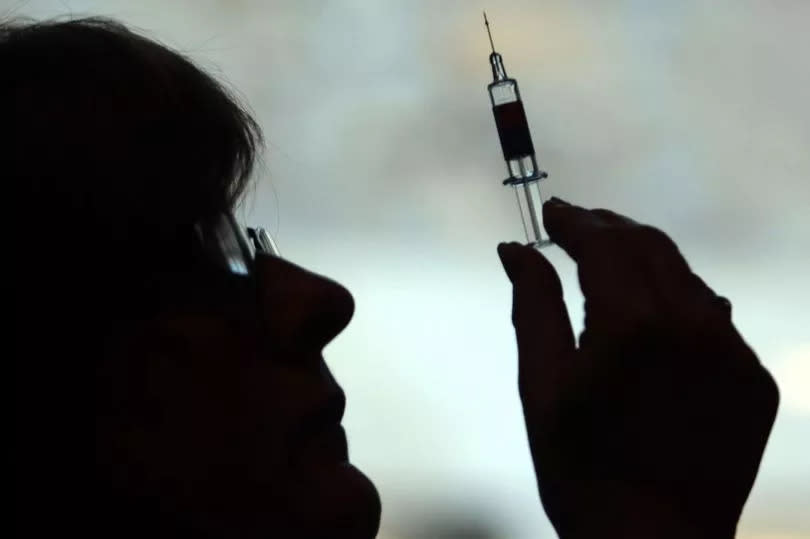Mapped: The worrying surge in measles cases across Greater Manchester
Almost 800 suspected cases of measles have been recorded in Greater Manchester since the start of an nationwide outbreak last October, the M.E.N. can reveal. New figures reveal the scale of the startling recent surge in the once-eradicated disease.
The World Health Organisation (WHO) declared the UK had eliminated measles in 2016, thanks to the success of the measles, mumps, and rubella (MMR) vaccine.
But just two years later, that status was removed following an increases in cases. Now, after take-up of the vaccine dropped across the nation, England is facing its biggest measles outbreak in more than a decade. It's one of the world's most infectious diseases and spreads easily among those unvaccinated.
READ MORE: New FLiRT and LB.1 Covid variant symptoms as experts speak out
The Manchester Evening News has analysed official numbers to reveal the total number of suspected cases since the situation first emerged last year.
There have been a total of 791 suspected cases across Greater Manchester - with more in Manchester than any of the region's nine other local authority areas, the statistics show. And Manchester comes second to Birmingham, where the outbreak began, for the most suspected cases, our analysis reveals..
There have now been 2,049 laboratory-confirmed cases of measles since the current outbreak started in October in Birmingham, according to the UK Health Security Agency (UKHSA). The majority of these cases - 63 per cent or 1,283 - were in children aged 10 or younger. Another 30 per cent were in young people and adults aged 15 and over - 614 cases.
London has had more confirmed cases than any other region, with 740, followed by the West Midlands - 663 - and the East Midlands - 176.
Separate figures show that the UK Health Security Agency (UKHSA) received notifications of 736 suspected cases of measles from GPs in England and Wales last month alone. These are alerts GPs are required to send to the UKHSA every time they diagnose a case of what they believe to be measles.
While these cases have not been confirmed in a laboratory, they show suspected infections in council areas and can provide an early warning of possible outbreaks.
There were 57 alerts - suspected cases - in Greater Manchester in June, with 11 in Manchester, 10 in Salford and seven cases in Rochdale and Wigan, the figures reveal, with just less than a third expected to be positive.
Since last October, the UKHSA has received notifications of just under 7,000 suspected cases in England, plus another 500 in Wales. Based on the number of lab-confirmed cases since October, around 30 per cent are likely to test positive for measles.

These figures show that Birmingham - where the current outbreak began - has had the most suspected cases since October with 439, including 14 in June. Next is Manchester with 160, and then Wandsworth and Leicester with 149 each.
But the London borough of Lambeth had the most suspected cases last month with 20, followed by Wandsworth, also in London, with 19, and then Coventry with 16.
Here are the Greater Manchester figures.
The first figure reveals cases of measles in June - the second the total number of cases since the outbreak began last October.
Bolton: 3 - 100
Bury: 3 - 41
Wigan: 7 - 93
Rochdale: 7 - 65
Stockport: 4 - 52
Manchester: 11 - 160
Salford: 10 - 90
Tameside: 4 - 66
Trafford: 4 - 58
Oldham: 4 - 66
The key symptoms of measles include a high fever, coughing, sneezing, red and sore watery eyes, and a rash that usually appears after the initial symptoms.
The UKHSA blames the spread of the disease since October on low take-up of the MMR vaccine in parts of the country. In England, 92.5 per cent of children had received at least one dose of the MMR vaccine by the age of five in 2022-23, down from 93.4 per cent in the previous year and below the national target of 95.5 per cent.
Only 84.5 per cent have received both doses. The World Health Organisation said coverage must be 95 per cent or higher to achieve population-level immunity.
Dr Vanessa Saliba, Consultant Epidemiologist at UKSHA said: "This year in England we have seen a steep rise in measles cases, observing the highest number of cases reported in over a decade. London has been particularly impacted in the most recent months, with most cases in unvaccinated children under the age of 10 years.

"The MMR jab offers the best protection against measles. Measles is preventable but many thousands of children around the country are still not fully vaccinated and may be at risk of serious illness or life-long complications. No parent wants this for their child.
"Just one case of measles in a community with low vaccination levels can lead to outbreaks, especially in schools and nurseries. Parents should check their child’s Red Book now to ensure that children are up to date with the MMR and other routine vaccines. If you’re unsure, contact your GP practice to check. Your GP can offer the vaccinations your child needs to ensure they are protected."
Catching measles can lead to life changing issues for adults and children, such as blindness, deafness and swelling of the brain (encephalitis) – and those in certain groups, including babies, pregnant women, and people with weakened immunity, are at increased risk of these complications.
Symptoms of measles appear 7-10 days after contact with the virus and include:
cold-like symptoms such as runny or blocked nose, sneezing and cough
red, sore, watery eyes
high temperature (fever), which may reach around 40C/104F
a non-itchy, red-brown rash usually appears 3-5 days later (sometimes starts around the ears before spreading to rest of the body), spots may be raised and join to form blotchy patches – which may be harder to see on darker skin tones
small white spots may appear inside cheeks and the back of lips (for a few days)

 Yahoo News
Yahoo News 
